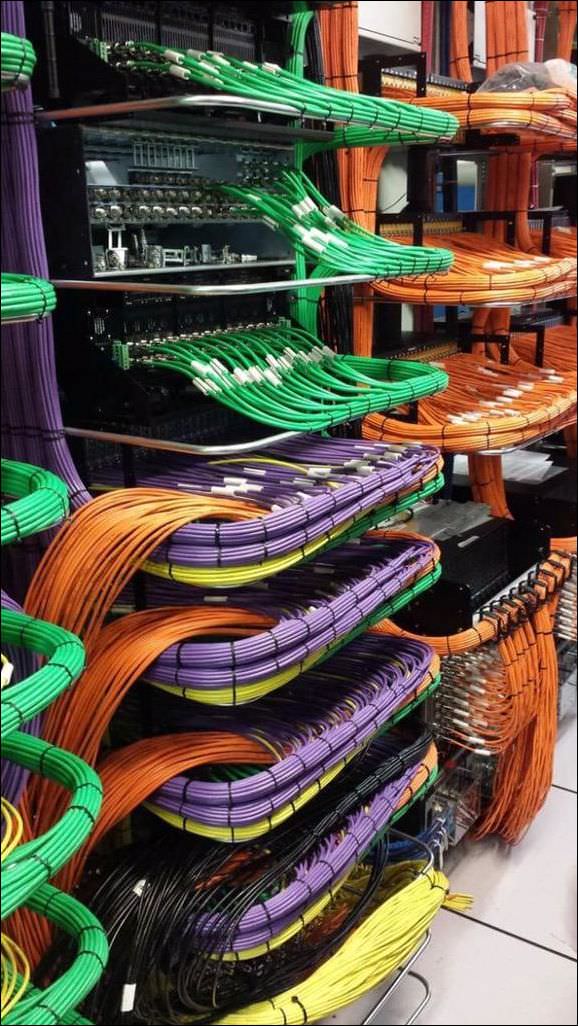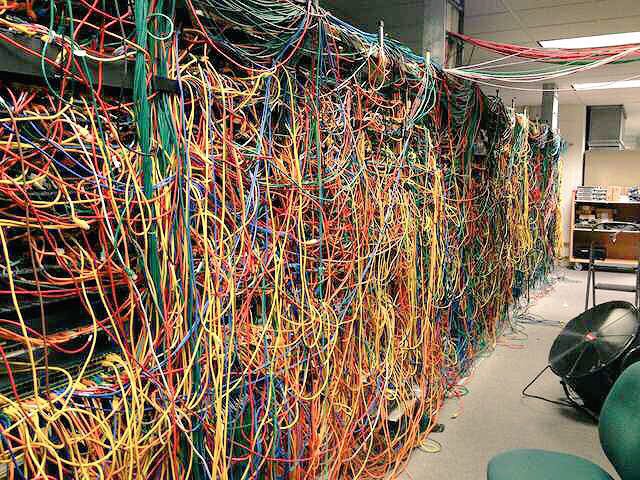How to wire a network ?
There are many ways to wire Ethernet networks. When students create simple labs with a few cables and a few switches and a few hosts, they simply plug any suitable cable and run their experiment. In real networks, a good wiring strategy can help to avoid lots of problems and lost time debugging those problems.
A recent discussion on twitter showed two photos that easily illustrate the difference between a good and a bad wiring strategy.
Let’s start with the good strategy, posted by @dnsprincess

Shortly after, @brian_jorden showed another strategy that he saw in a real network. I remember seeing a similar strategy at a smaller scale in our CS Department several years ago …

The cable layout is visually better in the good wiring strategy, but if you zoom on the Ethernet cables, you will observe that each of them has a label with a number attached at both ends of the cable. With these labels, you can verify that the two endpoints of a cable are correct. The best wirers go one step further by documenting each installed cable, with its labels and endpoints, in a database that is updated after every wiring change. It takes time every time some changes a cable, but network operators win a lot of precious time when the network is in trouble and problems need to be debugged.
